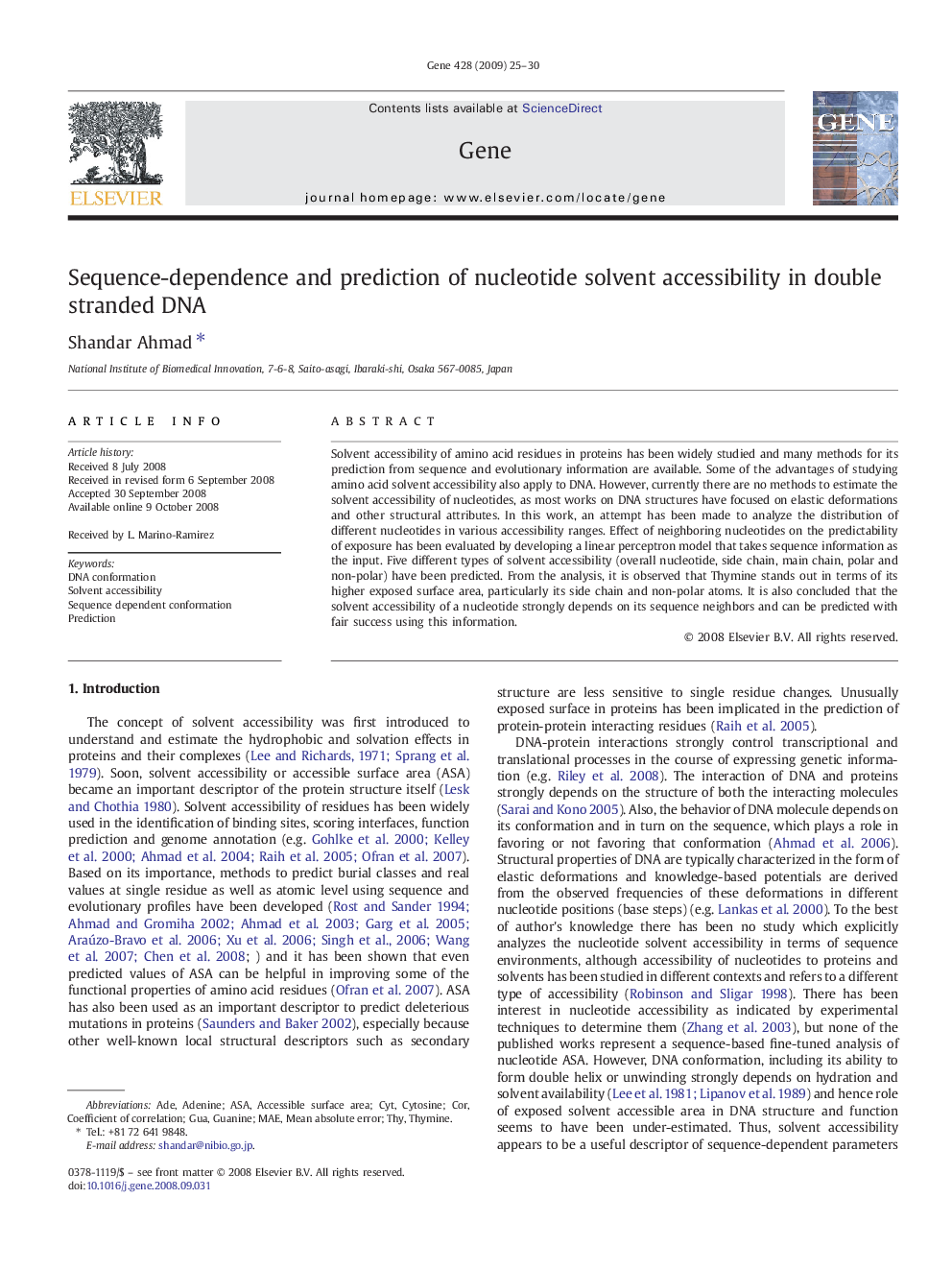| Article ID | Journal | Published Year | Pages | File Type |
|---|---|---|---|---|
| 2819153 | Gene | 2009 | 6 Pages |
Abstract
Solvent accessibility of amino acid residues in proteins has been widely studied and many methods for its prediction from sequence and evolutionary information are available. Some of the advantages of studying amino acid solvent accessibility also apply to DNA. However, currently there are no methods to estimate the solvent accessibility of nucleotides, as most works on DNA structures have focused on elastic deformations and other structural attributes. In this work, an attempt has been made to analyze the distribution of different nucleotides in various accessibility ranges. Effect of neighboring nucleotides on the predictability of exposure has been evaluated by developing a linear perceptron model that takes sequence information as the input. Five different types of solvent accessibility (overall nucleotide, side chain, main chain, polar and non-polar) have been predicted. From the analysis, it is observed that Thymine stands out in terms of its higher exposed surface area, particularly its side chain and non-polar atoms. It is also concluded that the solvent accessibility of a nucleotide strongly depends on its sequence neighbors and can be predicted with fair success using this information.
Keywords
Related Topics
Life Sciences
Biochemistry, Genetics and Molecular Biology
Genetics
Authors
Shandar Ahmad,
